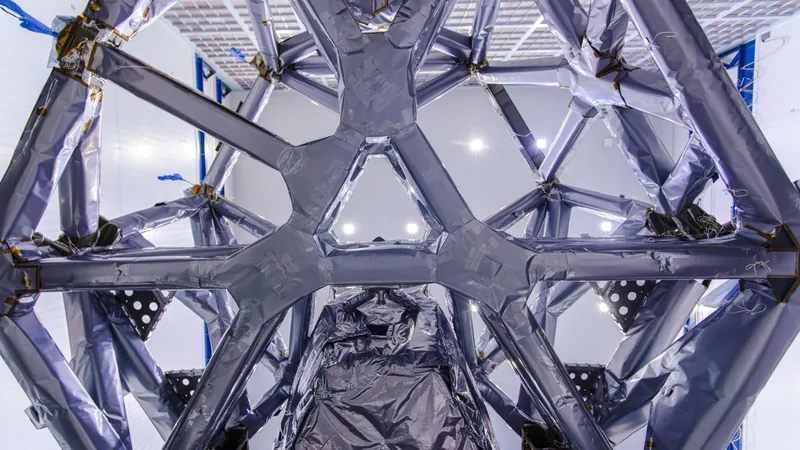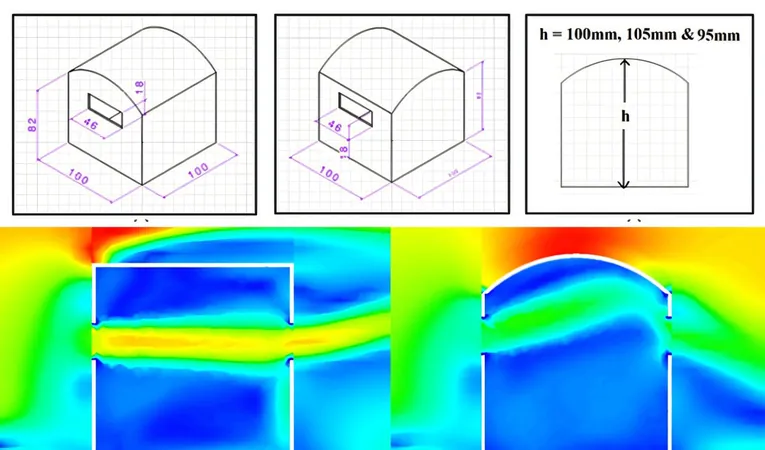
NASA’s Revolutionary Roman Space Telescope Set to Unlock the Secrets of Distant Suns and Potential Alien Worlds!
2024-11-10
Author: Emily
Introduction
In a significant leap forward for astronomical exploration, NASA's Jet Propulsion Laboratory in Southern California has successfully integrated a key component onto the Roman Space Telescope. The Roman Coronagraph Instrument is engineered to block out starlight, allowing scientists to identify the dim rays of planets located outside our solar system. This groundbreaking innovation represents a major milestone for the innovative Nancy Grace Roman Space Telescope.
Launch and Capabilities
Set to launch in May 2027, the Roman Space Telescope boasts a field of view over 100 times larger than that of the Hubble Space Telescope. This next-generation observatory will be a powerhouse in investigating complex topics such as dark energy, exoplanets, and infrared astrophysics. It is equipped with two primary instruments: the Wide Field Instrument and the Roman Coronagraph Instrument, which is critical for future missions like the proposed Habitable Worlds Observatory—a telescope crafted specifically to seek out signs of life on distant planets.
Importance of Coronagraph Technology
Rob Zellem, the deputy project scientist for the Roman Space Telescope at NASA Goddard, emphasized the importance of the Roman Coronagraph technology, stating, “We need the Roman Coronagraph to demonstrate this technology. The lessons we learn will be applied to future NASA flagship missions that aim to find Earth-like planets.”
How the Coronagraph Works
About the size of a baby grand piano, the coronagraph functions through a sophisticated assembly that includes masks, prisms, detectors, and self-adjusting mirrors—all designed to block the intense glare of distant stars and unveil the planets that orbit them.
Current Exoplanet Detection Methods
Although astronomers currently rely mainly on indirect methods like the transit technique to find exoplanets—where the light from a star dims slightly as a planet passes in front of it—this method has its drawbacks. Only a small fraction of planets can be observed due to the limitation of orbital alignments, leaving many celestial bodies unnoticed.
Future of Planet-Hunting Technology
To add to the excitement, scientists are increasingly looking toward coronagraphs as the future of planet-hunting technology. The Roman Coronagraph Instrument aims to detect exoplanets that are 100 million times dimmer than their stars, significantly outperforming current space-based coronagraphs by a factor of 100 to 1,000.
Integration Progress
Currently, integration of the coronagraph onto the telescope's Instrument Carrier—a robust structural component situated between the main mirror and spacecraft bus—was accomplished, paving the way for further integrations later this year. Brandon Creager, a lead mechanical engineer for the Roman Coronagraph at JPL, explained, “You can think of the Instrument Carrier as the skeleton of the observatory, connecting all the components.
Looking Ahead
As engineers prepare for a series of checks and tests, the anticipation grows for the integration of the Wide Field Instrument and ultimately the telescope itself. Liz Daly, the lead for integrated payload assembly at Goddard, reflected on the collaborative efforts that brought the observatory to life, noting the hard work and dedication of countless teams.
Conclusion
As we await the launch of the Roman Space Telescope, the possibilities of discovering new exoplanets, deciphering the mysteries of dark energy, and potentially identifying signs of life beyond our own planet create a thrilling landscape for the future of space exploration. What secrets will the cosmos reveal? Stay tuned for updates on this groundbreaking mission that could change our understanding of the universe!









 Brasil (PT)
Brasil (PT)
 Canada (EN)
Canada (EN)
 Chile (ES)
Chile (ES)
 España (ES)
España (ES)
 France (FR)
France (FR)
 Hong Kong (EN)
Hong Kong (EN)
 Italia (IT)
Italia (IT)
 日本 (JA)
日本 (JA)
 Magyarország (HU)
Magyarország (HU)
 Norge (NO)
Norge (NO)
 Polska (PL)
Polska (PL)
 Schweiz (DE)
Schweiz (DE)
 Singapore (EN)
Singapore (EN)
 Sverige (SV)
Sverige (SV)
 Suomi (FI)
Suomi (FI)
 Türkiye (TR)
Türkiye (TR)